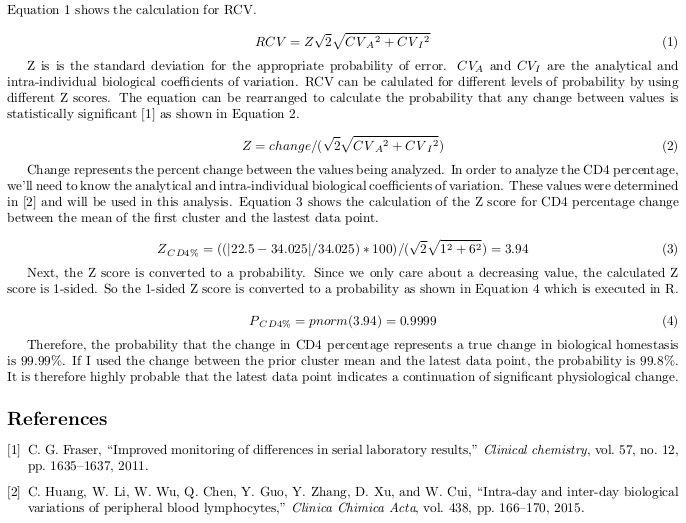undiagnosed
Senior Member
- Messages
- 246
- Location
- United States
I wouldn't expect to have significant lymphocytopenia until the CD4 count gets lower. For example, this study was able to predict CD4 cell ranges from total lymphocyte counts in ART naive HIV patients. They were able to predict a CD4 range of 200-499 /uL from a total lymphocyte count of 1200-1500 /uL with a maximal sensitivity 96.67% and specificity of 100%. For total lymphocyte counts below 1200 /uL, they predicted a CD4 < 200 /uL with 72.2% sensitivity 100% specificity.Of course, a deficit of T helper and T killers can cause lymphocytopenia, but you have it insignificant, and the trend you are talking about is statistically insignificant.
The data I was referring to for significance was the CD4 %. Here is a bigger plot of the data so it's a bit easier to see.

From the data you can see two clusters, the first four data points form one and the last 3 data points form the other. It is evident that the measurements are clustered around different means. So I can calculate the mean values for each cluster and I get the following:
Cluster 1: 34.025 %
Cluster 2: 29.7 %
Now with these means I can calculate the probability that this shift indicates a statistically significant biological change rather than a change due to test analytical variation or individual biological variation using the reference change value method.

Establishing a trend would be more prone to error given the underlying data is so limited. The main issue is that only one significant drop has been observed so far so it's not really possible to accurately estimate a trend until more are observed. But if I were to estimate a similar progression to what is seen in this data with a OLS linear regression, I get a p-value of 0.0247 from the t-test indicating that the slope is not equal to zero at p < 0.05.
If I had to rank my chronic symptoms in order from affecting my quality of life from most to least I would say:Among the clinical manifestations of the greatest attention, in my opinion, deserves a fungal infection, most likely associated with a relatively low number of T killers.
- Joint degeneration (pain, crepitus, instability. mostly the knees and hips but others affected as well)
- Chronic HPV infection
- Lipoatrophy (pain, self-conscious of face changes)
- Dry mouth
- Dry eyes
Last edited:



